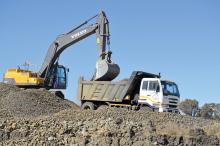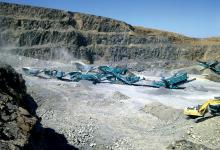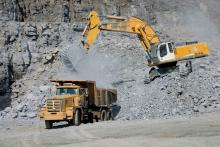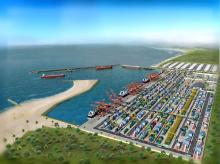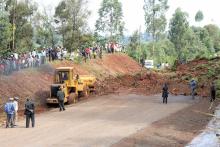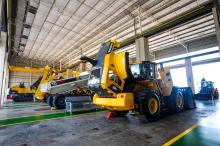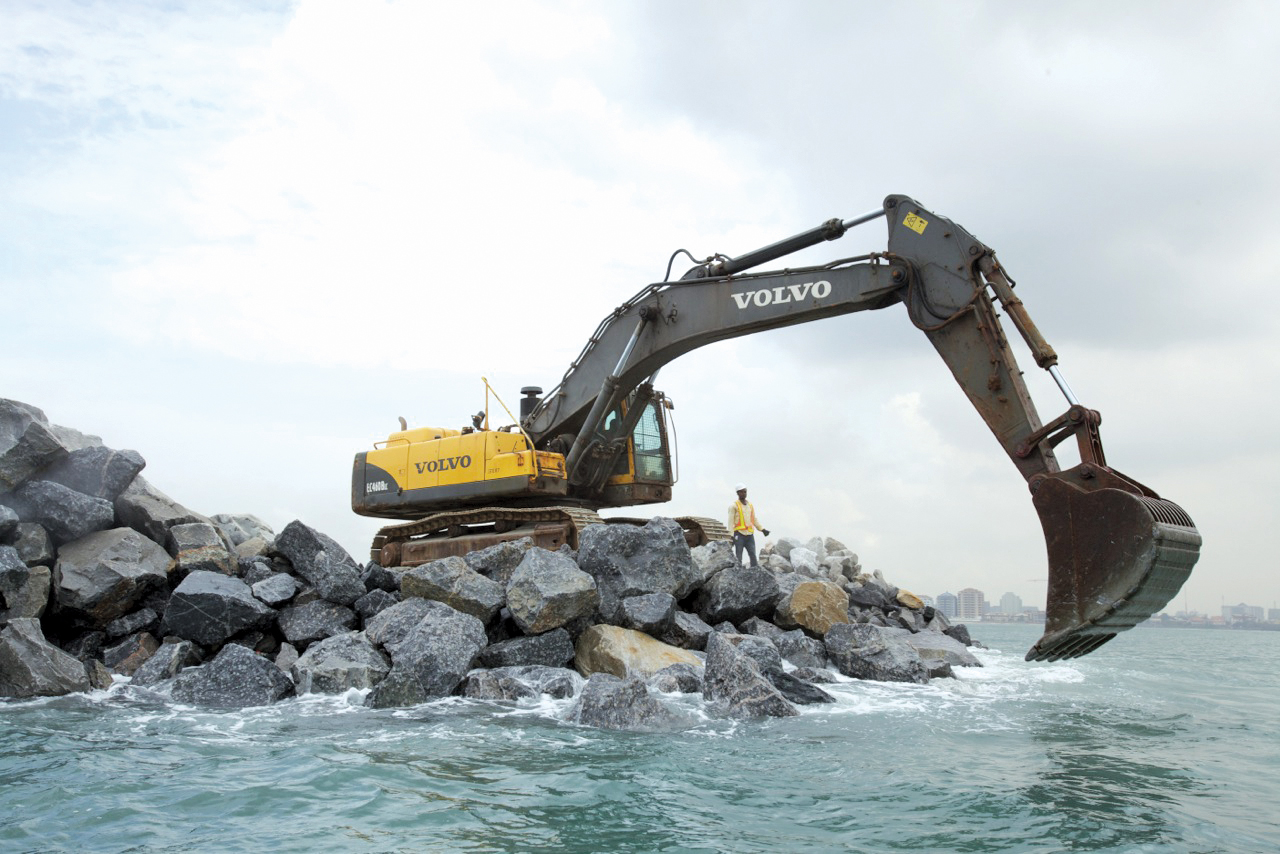
For indication of growth opportunities in Africa and particularly sub-Saharan Africa, look to the energy and transport sectors, and some pockets of economic expansion.
South Africa is naturally still the largest market, with aggregates extraction currently estimated by the Aggregates & Sand Producers Association of South Africa (ASPASA) at about 150 million tonnes/year. Other countries and their major infrastructure projects are developing, however.
Nigeria can now claim the largest cement industry in sub-Saharan Africa, according to investor reports circulating towards the end of 2013. Nigeria’s annual output has reached about 28 million tonnes in comparison to South Africa’s 18 million tonnes, said a Renaissance Capital report.
Greater regulation has helped to increase transparency of cement production in the region. How aggregates production fares alongside is less easy to fathom, but growth opportunities can be determined in Nigeria, Zambia, Mozambique and other countries where oil and gas reserves are bringing much needed infrastructure investment.
For such a massive continent of some 55 countries, 45 of them sub-Saharan, Africa’s aggregates production is still relatively small, in line with levels of economic development. Tellingly, one of the largest cement and hardstone extractors in the region,
This may be as much an indicator of the size of Lafarge’s Middle East production, although the relative volume of development in Africa is also reflected in the turnover of Volvo Construction Equipment (
“Quarrying and mining accounts for about 70% of our sales in Africa,” says Volvo CE business director for Africa, Stefan Lind.
“The market in Africa is not particularly big in world terms. Even though we are seeing growth and a lot of potential, it is still starting out from a small base.”
The Commonwealth Business Council (CBC) has described prospects across Africa in relation to its “infrastructure deficit.” Tapping into the continent’s enormous potential for natural resources and human capital calls for roads, railways, energy and water supply on a grand scale: expensive infrastructure that demands investment.
The African Development Bank’s (ADB) Programme for Infrastructure Development in Africa (PIDA) sets out aims to develop around 37,000km of highways, 30,200km of railways, an additional 54GW of hydro-electric power and the capacity to handle another 1.3 billion tonnes at Africa’s ports by 2040. The estimated cost is $360 billion, with about $68 billion of annual spending programmed up to 2020.
A funding gap estimated by the CBC at $31 billion/year will have to be closed if the PIDA objectives are to be achieved. The African Union, CBC, NEPA (New Partnership for Africa’s Development) and others have embarked on a concerted campaign to attract more foreign public and private investment to the continent.
While predominantly for funding energy and transport, the PIDA programme gives an indication of where in Africa growth will appear concentrated. Of the $68 billion projected up to 2020, $23.3 billion is earmarked for East Africa; $21.5 billion would be spent in central countries; $12.6 billion in the southern region and $6.2 billion in West Africa.
Despite the shortfall in PIDA funding, foreign investment, particularly from China, is having a marked effect. In Zambia, for instance, the country’s massive Link Zambia road construction and maintenance programme, estimated at $1.6 billion over its first five year phase (with two similar sized programmes set to follow), is now underway and gathering pace, partly with substantial Chinese investment.
“We think the total market for construction and mining equipment in Africa is about 23,000 units, annually, plus maybe another 4,000 from foreign contractors such as those from China,” says Lind.
“Involvement of overseas companies tends to confuse the picture. Initially they may bring in their own equipment and operators due to a lack of supply or knowledge and certainty over supply and servicing networks in any particular country, but confidence in Africa’s internal plant market is likely to grow a great deal over the next few years.”
A big challenge for all OEMs in Africa is a lack of skilled personnel locally, Lind says. Volvo claims a key benefit of its services is customers’ increase in equipment up-time. To build up its network of skilled technicians, the company has introduced a dedicated training centre in Ethiopia’s capital, Addis Ababa in association with the Swedish Economic Development Association.
“Ethiopia is just one country in need of more developed infrastructure. In its case it has big plans to develop its rice agriculture, for which it needs to build a network of processing factories and so demands substantial construction materials and equipment. Big distances are involved, so for importing and exporting goods and generating its economy the country needs more developed infrastructure, particularly roads and ports,” says Lind.
Other counties showing great promise due to rich natural resources and a need to develop ways of accelerating industry include Uganda, Kenya and Angola.
“A lot of growth may not happen if local people are not allowed to benefit, if oil and gas revenues are not reinvested back into those countries,” Lind says.
“Demand for infrastructure is also going to depend on population growth, which is expected to more than double across Africa in the next 20 to 50 years. Africa currently has just two cities, Cairo and Lagos, with populations exceeding 10 million. There will be five to seven cities of this size within 50 years.”
All of this is going to put a big demand on raw materials and imported goods. Transport needs are reckoned to be six to 12 times higher than existing networks. Roads are also in dire need of maintenance and paving to maintain vital access to essential services and so to lift people above the poverty line across large swathes of sub-Saharan Africa.
The quarrying industry that will develop to serve these developments is likely to consist predominantly of a large number of small local operations. International companies such as Lafarge and
A number of large local quarrying operations are supplying construction of the Eko Atlantic development on the shoreline of Lagos in Nigeria. This is a multi-billion dollar private investment project involving reclamation of 10km² of land with 140 million tonnes of dredged sand.
An 8km long and 15m high rock revetment has been built to protect the new Eko Atlantic shoreline using 700,000tonnes of granite transported by road from the Ibadan granite quarry, 161km inland from Lagos.
Road construction for Eko Atlantic is now largely complete. Construction of commercial, leisure and residential development is following and is set to continue for the next 10-15 years, ultimately to accommodate about 300,000 residents and visitors to the city’s holiday and business resorts.
Volvo CE’s Nigerian distributor S&T supplied the fleet of 50 trucks transporting materials to site, plus some of the plant working at Eko Atlantic, helping to increase Volvo’s sales by 15% in Africa in 2013.
“While South Africa represents our largest market in Africa, with Algeria the second, sales are generally increasing across all 41 countries in which our dealers operate. There is a growing need for materials to build new infrastructure throughout the continent,” Lind says.
SA regulation ‘positive results’
Recent efforts to improve the regulation of South Africa’s quarrying industry are bringing positive results.
Since 2007, ASPASA has been lobbying the South African government for some form of protection from unregistered illegal operators.
“In many instances the problem includes the likes of municipalities who for decades have used borrow pits to source aggregates for road construction and municipal infrastructure projects,” says an ASPASA spokesman.
South Africa’s Department of Mineral Resources has been taking action, winning some landmark cases against illegal sand miners in Cape Town and elsewhere in the state. South Africa’s quarrying industry has also received welcoming news in the form of national plans for a $36 billion investment in infrastructure upgrades across the country.
“South Africa’s infrastructure is well developed and we have a mature mining industry so challenges are probably much the same as elsewhere. In terms of regulations, companies have to deal without Broad Based Black Economic Empowerment legislation which can be cumbersome and we have a very unionised climate here, so labour can be a challenge,” says ASPASA’s spokesman.
“A long list of equipment suppliers based in South Africa has a good springboard into the rest of the continent. Across the border they face similar challenges with labour, but strong forecasts for growth will be supported with infrastructure. ASPASA is becoming active in these countries, assisting in setting standards and regulations for the quarrying industry.
“Africa is bursting at the seams with possibilities. Much of the sand and aggregate mining is still being done informally, so records are difficult to obtain. Governments though realise they are losing out on potential revenue, so it seems the honeymoon for illegal operators is drawing to a close across the continent.”

